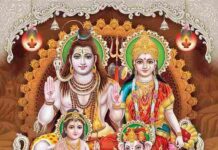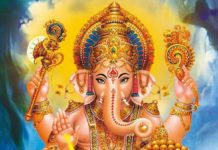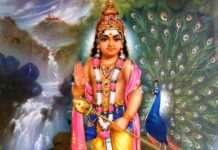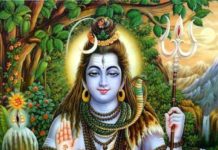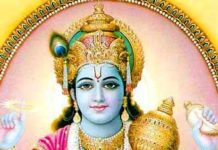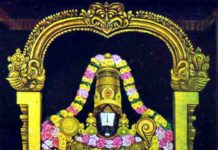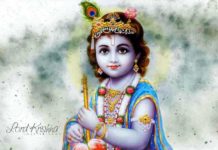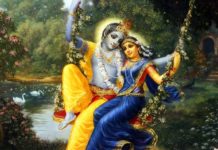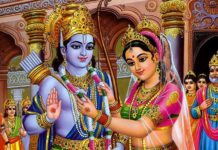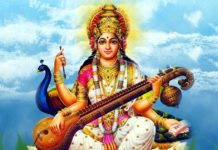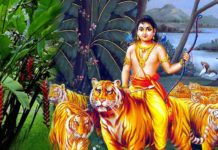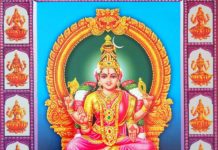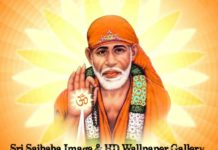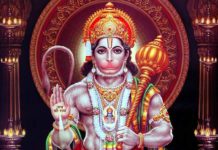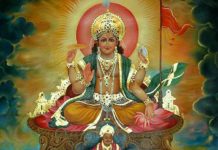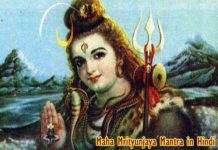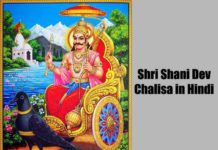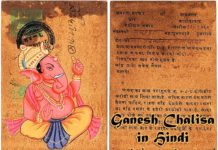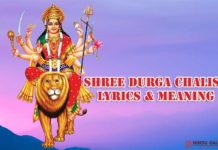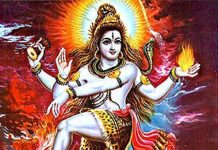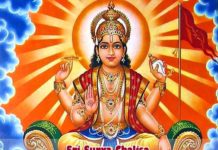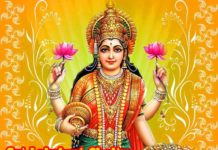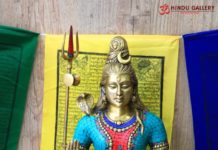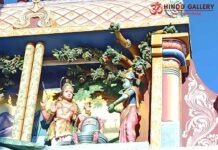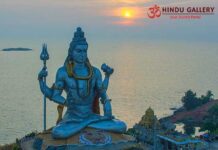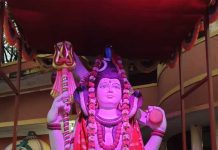Thiruvanaikka is the place where the temple for Sri Jambukeswara, one of the manifestations of Lord Shiva is situated. Sri Ambal is known as Sri Akilandeswari. The temple is situated at Trichy, Tamilnadu.
Pancha Bootha Sthal
This temple is one of the Pancha Bootha Sthal. It represents the water in the five basic elements of nature. This is also called as Gnana Bhumi.
History
The temple was constructed by Ko Chenkat Chozhan 2500 years back. This Chola King had built around seventy Shiv temples. This temple is the first among them. He had consecrated Thiruch Chaala Kandigai Mandapam, Gopuram, Dhanthi puga vayil, Maada Veedhi, Eighteen Saiva Mutts and Dwajasthamba in eight directions.
The area of Thiruvanaikka was earlier called as Thenkarai Pandi Kulasani Valanadau. This was ruled by Chola, Pandiya and Hoysala Kings. They have patronized the temple during their respective rules.
As per the inscriptions, the first Kulothunga Chola King Rajasekara Varma (1127 A.D), the third Raja Raja Chola King Rajasekara Varma (1245 A.D) and the third Kulothunga Chola King (these Kings were referred as Thribhuvana Chakravarthy) and the Rajendra Chola King had liberally donated lands for the temple.
Jadavarman Sundara Pandian Devan (1251-1264 A.D), Maravarman Kulasekaran (1278 A.D) and Kakatheeya King Prathapa Rudra Deva had liberally donated lands for the temple. The east gopuram in the fourth precinct is said to be built by Sundara Pandian.
Legend
There are several legends pertaining to the temple.
Jambukeshwaram
Once a sage was doing penance in the forest of Jambu trees. One day, the white jambu fruit fell on his lap. Considering it as sacred, he had decided to give it to Lord Shiv. So, he went to Kailash.
He worshipped Lord Shiv there and gave him the fruit. The Lord ate the fruit and spitted out the seed. The Sage swallowed the spat seed as Prasad.
Lord Shiva was pleased with the level of devotion of the Sage. He asked him to go to the banks of Ponni river (Cauvery) and exist there as the white Jambu tree. He also told him that He will appear as Shiv Ling under the tree.
The Sage followed Lord Shiva’s advice and became a Jambu tree there. Hence this place is called as Jambukeshwaram.
Thiruvanaikka
‘’Aanai” in Tamil means “elephant”. This place was once a dense forest. There was a Shiv Ling under the white Jambu tree. This was the tree which was the sage blessed by Lord Shiva as mentioned previously.
One day, an elephant saw the Shiv-Ling. Due to previous birth Karma effect, the elephant had decided to do Puja to Shiv Ling.
The elephant used to clean the area around Shiv Ling. Then it brought water from river Cauvery and did abhishek. Then it brought flowers and fruits for Neivedyam. This went on for many days.
At the same time, a spider also came to the place. Due to Karma effect, the spider also wanted to do service to the Shiv Ling. So, it built a web above the head of Shiv-Ling so that no trash fell on Shiv Ling.
Whenever the elephant visited the place, it was annoyed at the cobweb and kept cleaning it. The spider also kept making the web. Both were not aware of each other.
One day, when the elephant came for Puja, it saw the spider making the web. Getting angry, it threw away the web. The spider got angry and went into the trunk of the elephant and hit its brain. The elephant died. Even the spider died as it could not come out.
Lord Shiva appeared with Sri Uma Devi and granted moksha to both the elephant and the spider. The elephant was given a place in the celestial army. The spider was made to be born as Chola King Kho Chenkat Chozhan. Only this Kho Chenkat Chozhan was blessed to establish the temple.
Since then, the place was called as Thiru Aanaikka and Gajaranyam.
Sri Ambal as Kanya
Sri Ambal had worshipped Lord Shiva here. Lord Shiva functioned as Her Guru here. Since education is endless, Sri Ambal here remains as the disciple of Lord Shiva. Hence there is no marriage ceremony conducted in this temple for Deities.

Lord Shiva had taught Sri Ambika that worshipping Him in the truthful way would please Him than the observance of rituals. He had ordained that the best display of Gnana (wisdom) is the love towards God. Hence Sri Ambal had taken the form of His primary disciple and has set an example in worshipping Lord Shiva. She is also referred as Pannin Nermozhi Mangai and Vadiveyum Mangai.
Sri Kalidas, the versatile poet got the blessings of Sri Akilandeswari. He was under the patronage of Chaluva King Thirumalai Raya.
Sri Brahma’s penance
Sri Brahma is the one entrusted with the work of creation of lives. Suddenly, He started feeling very proud of himself. He made a woman from his prowess. He himself fell for her beauty. He had forgotten His duty. As a result, the entire world was going reckless.
Sri Brahma had realized His mistaken pride and its ill effects. He could not do anything to rectify the mistake. He came to earth and visited most of the Shiv Temples.

Then He came to this place called Jambu Vanam. He did severe penance on Lord Shiva here. Lord Shiva was pleased with His penance. He had made His consort Sri Uma Devi in male form and He appeared in female form. Both of Them gave darshan to Sri Brahma thus.
Sri Brahma then understood and had apologized to Lord Shiv and Goddess Parvathi for having lost His mind. They granted Him his creation powers back.
Lord Rama
Lord Rama was afflicted with Brahma-hathya Dosha as He had killed Ravana and Kumbakarna who were in the lineage of Sri Brahma.
Sri Rama had consecrated Sri Ramalingeswara at Rameswaram to alleviate the sin of killing Ravan. Still, the sin of killing Kumbakarna kept following Him.
Because of this, His travel to Ayodhya got delayed. He had asked the Sages at the river bank of Cauvery on solving the problem.

As suggested by them, He had dug a pond at the place west to the Sanctum of Sri Jambunatha. From the mud, He made a Shiv Ling and did Puja.
That Shiv Ling exists as Sri Kariya Maleswarar / Sri Nila Giriswarar Sannidhi.
Sage Gowthama
Sage Gowthama had cursed his wife Ahalya to be stone as he suspected her of infidelity. He knew that she would re-gain her form only if Lord Ram’s foot touched the stone. He knew that it would take long time.
Despite all his rage, once his anger subsided, he had longed for his wife. He did penance on Lord Shiva here and did Puja also regularly.
Lord Shiva was pleased with his penance. He assured him that he could re-unite with his wife Ahalya and live happily with her.
Sage Parasara
Once, Sage Viswamithra and Sage Vasishta were engaged in a debate at the Palace of Lord Indra. Vishwamithra had lost. He got angry with Vasishta.
So, he made a goblin from Yagna and asked the goblin to kill Vasishta. The goblin went to the Ashram of Vasishta. The goblin had mistaken the Sage Shakthi (the son of Vasishta) as Vasishta and killed him. Shakthi’s wife was expecting a baby.
Vasishta was out of the Ashram at that time. When he had returned, he was devastated to see his son dead. Sri Brahma had appeared and consoled him. Sri Brahma told him that the Son that would be begot by his daughter in law would be a great sage.
Vasishta kept chanting the Vedic Mantras even before the child was born. The child heard them all even when residing inside the womb. Sage Shakthi’s son was born. Vasishta had named him as Parasara.
Parasara became a great scholar. When he came to know about his father’s death, he wanted to avenge it. So, he did Pujas to Lord Shiva at Thiruvanaikaa. Lord Shiva had blessed him for the fulfillment of his wishes. Parasara did the last rites of his father.
Armed with the blessings of Lord Shiva, Parasara had done an Yagna at the north east side of the temple for destroying all the evil goblins. The devilish goblins vanished in the homam fire. Eventually, even the Ashta Digh Palakas got pulled into the fire.
Nairuthi, one of the Ashta Digh Palakas cried for help from Lord Shiva. Lord Shiva took pity on him. He had showed the form of Sage Shakthi to Parasara. Parasara was pleased to see his father’s form. He stopped putting Nairuthi in fire.
As Lord Shiva took pity on Nairuthi, He is also referred to as Pachaa Thaapa Eshwara. This name is recited when archana is done.
Pearl necklace
There was a chola king who ruled the land after Chengat Chozhan. One day a pearl merchant from abroad came and sold a pearl necklace. King bought it for his wife. They bathed in Cauvery. The haara fell in the river.
The King arranged search party. But the necklace could not be found. After two days, they went to the temple to worship Shiv. The pearl necklace fell from one of the abhisheka pots on Shiv ling. King realized his mistake of not offering the pearl necklace to Lord Shiv.

Structure
The temple is built inside a garden. Swamy’s sanctum faces west. Amman’s sanctum faces east. The length of the temple is 2500 feet and the breadth is 1500 feet.
It has 5 precincts. The five precincts have massive structures. Most of the structures were consecrated by Gods, Deities and Sages.
At the front tower of 5th precinct, there are pillars with lions indicating Narasimha Pallava. The 5th precinct is called Vibhudhi chuttru.
There are houses in 4th and 5th precincts. Processions (including Ther) during festivals happen in 4th precinct.

There are lots of water bodies and groves (thoppus) inside the temple premises. As per legend, Sri Ranganatha had a temple in the area only to have the darshan of Jambukeshwara. Once a year, Sri Ranganatha comes to Nachiar Thoppu here and stay for one day. There is a new water body in Nachiar Thoppu.

In the second precinct in the south west portion, the sculpture of Vallabha Ganapathi is the finest. The vigraha of Dakshina Murthy at the wall side of Sri Urchava Nataraja is another example. Apart from that, there are excellent sculptures at all the mandapams and pillars.
Main sanctum
The shrine in the main sanctum is built in such a way that an elephant cannot enter. This was built so by Ko Chengat Chozhan in remembrance of the event which happended in his previous birth as the spider.

The Dhwajasthamba in the main sanctum is surrounded with four pillars.

Each of these pillars represent the four sacred places called Koodal Chathukkam. The first pillar depicts Thiruvanaikka; the second pillar represents Thiruvarur; the third pillar depicts Thiru Mayendram and the fourth pillar denotes Sri Kailash.

Deities
Lord Shiva is known as Sri Jambukeswarar, Sri Jalakandeswarar , Appu Lingam. The Shiv Ling is constantly in water. The water is called as Srimadh Theertham.

In the third precinct of the main shrine, the pillars are decorated with stone chains.

Sri Ambal is called as Sri Akilandeswari. Earlier, She used to be very fiery and She was called Ugra Swaroopini. The devotees were scared of Her and used to worship from afar only. Adi Sankaracharya had consecrated two Sri Chakras near Sri Ambal to bring down Her fierce nature. Sri Ambal was pleased with the Chakras and She had adorned them as ear ornaments.

Sri Akilandeswari had chosen the place of the temple to do Puja to Lord Shiva. For Uchi Kala Puja, the priest from Sri Ambal Shrine dresses himself as a female, wears a crown and rudraksha and brings water and flowers in hands, goes to Lord Shiva Shrine accompanied by instrumental music. He does archana to Lord Shiva.
The Sculpture of Sri Ambal is the epitome of beauty and perfection. Under the shrine, there is a scientifically designed store house for grains.
The Sthala Vriksha is white jambu tree.

Fifth precinct compound
The fifth precinct compound wall is called as Thiruneetraan madhil. Lord Shiva Himself wanted to take part in the construction of the temple. He took the form of a Sage and offered to take charge of building the compound wall.
He had engaged workers for the job. Daily, at the end of the day, He used to give Vibhudhi to the workers in lieu of wages. The Vibhudhi would then turn into money.
Hence this compound is called Thiruneetraan madhil.

Theerthas
Theerthas denote the water bodies present in the temple premises. They are as follows:
Brahma Theertham
This is in the southern side of the fourth precinct.
Indhra Theertham
This is in the south west side of the third precinct near the sanctum of Sri Kasi Viswanath.
Jambu Theertham
This is in the eastern side of the third precinct near the old Jambukeshwarar Shrine.

Rama Theertham
This is in the west side of the fifth precinct. Float festival is observed in Thai month.

Srimadh Theertham
This is in the main sanctum sprouting from the Main Deity Sri Jambukeshwara.
Agni Theertham
This is the well in the south east side of the third precinct near vasantha mandapam.

Soma Theertham
This is in Sri Rangam. It is also called as Chandra Theertham and Chandra Pushkarini.
Surya Theertham
This is in the south west side of the fourth precinct near the thousand pillar mandapam. Around this tank, there is a two rowed hundred pillar mandapam. Float festival is observed in the Poora Nakshatra day of Aadi month.
Agasthya Theetham
This is in the first precinct of Sri Ambal Shrine. This is a small well near the Palliyarai just opposite the Ambal Sannidhi.

Divine contributors
Around 2500 years back, this place was a forest with roaming elephants. It was Sri Ko Chenkat Chozhan, the Chola King who had made efforts to initially build the temple. Apart from him, there were many devotees who had contributed for the development and upkeep of the temple. The contributions made upto 18th Century are mentioned in the book titled ‘’Thiruppani Malai”.
Sivamuni Siddhar
It is believed that Lord Shiva Himself had appeared as the Siddha. He had arranged for the building of the fourth precinct wall and temple towers.
Lord Rama
Lord Rama is believed to have built the temple tank. He had dug a pond at the place west to the Sanctum of Sri Jambunatha. From the mud, He made a Shiv Ling and did Puja. That Shiv Ling exists as Sri Kariya Maleswarar / Sri Nila Giriswarar Sannidhi. He had also built the vasantha mandapam.
Sri Adi Sankaracharya
He had consecrated Sri Prasanna Vinayaka. He also made the Sri Chakras as the ear ornaments of Sri Akilandeswari Devi.
Chenkat Chozhan
He had built the main sanctum sanctorum for Sri Jambukeshwara. He had also constructed Thiruchala Kendikai Mandapam, Main Gopuram, Eighteen Mutts in Mada Veedhi and Dwajasthamba in eight directions.
Vijaya Balan
The King Vijaya Balan Agangalavan had contributed for the construction of the compound, mandapam and the gopuram of the second precinct.

Worshippers
Sri Jambukeswarar was worshipped by Sri Nandikeswara, Sri Akilandeswari, Sri Brahma, Sri Ramachandra, Sage Shambu, Sage Gowthama, Sage Parasara, Sage Thayumanavar, Sri Kalamegha, Sri Arunagiri Nathar, Sri Iyadigal Kadavarkon, Sri Appar, Sri Thiru Gnana Sambandhar and Sri Manikka Vasagar.

Hymns
Sri Thiru Gnana Sambandhar, Sri Appar, Sri Sundarar, Sri Manikka Vasagar, Sri Iyadigal Kadavarkon, Sage Thayumanavar, Sage Kashyapa, Sri Kalamegha, Sri Arunagiri Nathar, and Maha Vidwan Thirisarapuram Meenakshi Sundaram Pillai had composed songs and hymns on the Deities of the temple.

Other names
The place of the temple is called as Thiruvanaikka, Gahaaranyam, Jambukeshwaram, Jambuveechuram, Ven Naval vanam, Jambuvanam, Gnana Kshetram, Gnana Sthalam, Gnana Bhumi, Kaavai, Dhanthi Puga Vayil, Amutheshvaram, Dhanthivanam, Ipavanam.

Festivals
This temple has the unique glory and reputation of numerous festivals. Long long ago, Sri Brahma Himself had initiated the ritual of observing festivals.
Sri Brahma
When He had had the darshan of Lord Shiva under the white jambu tree, Sri Brahma had prostrated before Him and said,” We are all elated with Your darshan. We wish to commence the festivities in the Mrigashira Star of Maasi month by hoisting the Rishaba Flag and end the festival by de-hoisting the flag on the Rohini Star of Panguni month. I want the devotees to take holy dip in the Brahma Theertha on the end of the festivities.” Lord Shiva had granted the boons as desired.
Sri Brahma had prepared the invitation for the festival and sent it to all. The Devas, Nagas and humans had desired to attend the festival. On the Karthika Star-day of Maasi month, Sri Brahma had done Mruthsankara Gana and Ankuraarpana. On the next day of Rohini Star-day, He had drawn the picture of Nandi on the cloth and did Puja to the same. He had hoisted it as the flag at the Dwajasthamba of the temple.
From that onwards, celebrations were held invoking Sri Vinayaka and other Deities. On the evening of the seventeenth day, Sri Brahma had made eight flags with Rishabha drawn on them and did Puja. Then the eight flags were hoisted on the eighteenth day at the eight Dwajasthamba of the temple. Sri Jambunatha and Sri Akilandeshvari were present as Urchavars. From that day onwards Sri Jambynatha Deity appeared on different vahans and taken on procession in the mornings and the evenings.
On the twenty seventh day of Rohini-Star, holy dip was taken by the devotees at the Brahma Theertha in the morning. In the evening, the eight flags hoisted on the eight Dwajasthamba were de-hoisted. From the evening of twenty eighth day, for three evenings, Lord Shiva Murthy was taken in procession. From thirty first day for three days, mouna urchavam was done. Thereafter for three days, Sandesar Urchavam was held. Then the flag hoisted at the main Dwajasthamba was de-hoisted.
On the thirty seventh day, Sri Jambunatha Swamy Urchava Murthy was taken in procession in all the five precincts. The concluding festival was conducted on the thirty eighth day. At the evening of the thirty eighth day, Sri Swami and Sri Ambal Urchavars were kept under the canopy made of pearls. Thus, the function was grandly celebrated by Sri Brahma. Hence it is called as Sri Brahmothsavam.
The festival is being conducted every year since then in the same manner. It is believed that taking holy dip in the Brahma Theertha on conclusion of the festival shall bestow mukthi. It is also believed that taking holy dip in the Brahma Theertha for the twelve Amavasya shall alleviate sins.

Brahmothsavam
Brahmothsavam is being observed even nowadays for forty days as stipulated by Lord Brahma. In this, five days are dedicated for Sri Vinayak and Sri Muruga; three days are dedicated for the four Saiva Acharyas; three days are dedicated for Sri Kalyana Sundara Murthy; six days are dedicated for Sri Chandra Shekara Swamy; ten days are dedicated for Sri Somaskandha; three days are dedicated for Sri Chokkeswara; three days are dedicated for silent urcharvam; three days are dedicated for Sri Sandikeshvara; one day is dedicated for doing parikrama in panch prakaram as blessed by Sri Brahma; one day is dedicated for closing ceremony and the final day is dedicated for mandalabhishekam.
On the mrigashira star day of Maasi month, flag hoisting is done; Car festival is conducted on the Revathi star-day of Panguni. On Chaitra star day of Panguni, the five precincts procession is done. In this festival, Lord Shiva appears as Sri Ambal and Sri Ambal appears as Sri Shiva and taken out in procession.

Major festivals
Chithirai (Chaithra)
On the Vishu Punya kalam, the procession of Lord Shiva on Rishaba is done at the night. New almanac / Panchangam for the year is read. On Chitra Pournami, Lord Shiva is worshipped with marukozhundhu flower.
Vaikasi (Vaisaka)
Vasantha Urchavam is celebrated for ten days.
Aani (Jyeshta)
Ani Thirumanjanam is celebrated on the Uthra Star day. The parikrama of Sri Nataraja is done on that day. On the full moon day of the month, the Deity is worshipped with three fruits viz., mango, jack fruit and banana.
Aadi (Aashada)
Aadi Pooram festival is celebrated for Sri Akilandeswari for ten days. Every Friday in this month is celebrated for Sri Ambal.
At the onset of Dakshinayana Punyakaal, theertha vaari is done in daytime. Procession of Deities done on Rishaba Vahan in the evening. On the full moon day, Sri Swami is adorned with silk pavithram.
Aavani (Sravana)
On Moola Star-day, urchavam is done for Sri Shiv. On full moon day, abhishekam is done to Lord Shiva with sesame seeds.
Purattasi (Bhadra padha)
Navarathri / Dasara is celebrated for ten days grandly. On the Krishna Paksha Chathuthsai day, Kedhar Vrat is observed. On the next day, procession of Sri Somaskandha and Sri Saraswathi is done. On Vijaya Dashami day, arrow ceremony is held. On Pournami day, worship is done with rice paddy puffs.
Aaippasi (Aswini)
Deepavali is celebrated on Naraka Chathurthasi. On Pournami day, vibhudhi festival is held.
Karthikai (Kruthika)
Shank worship is done on all Mondays. On Pournami, Karthikai Deepam festival is celebrated.
Margazhi (Margazira)
On Arudra Darshan day, Sri Nataraja and the sixty-three Saiva Nayanmar are taken around in procession. Suprapadham festival is done throughout the day. Manicka Vasagar Guru Puja is done. On full moon day, worship is done with ghee.
Thai (Dhanur)
On Punarpusa star-day, float festival is celebrated for Lord Shiva on the Rama-Theerth tank. On last Tuesday, Pidariyar festival is celebrated. On full moon day, worship is done with honey.
Maasi (Magha)
On Sadhayam Star-day, festival is celebrated in memory of Kho-Chengat-Chozhan, the founder of the temple. Pidaariyar Raniamman festival is celebrated for seven days.
The Krishna Paksha Chathurthasi of Masi month is Maha Shiv Rathri. The Shiv Rathri time is from night 12 hours to 01.30 A.M. This period is called as Lingothbhavar Murthy kalam. The festival is celebrated grandly.
Panguni (Phalguna)
Annual Brahmotsavam is held in the month with procession in all the five precincts. Chandan worship is done on full moon day.

Timing
The temple conducts Puja for five times a day. Ushath Kala Puja from 06.30 A.M to 07.30 A.M, Kalai Sandhi from 08.00 A.M to 09.00 A.M, Uchi Kalam from 11.00 A.M to 12.00 Noon, Saya Ratchai from 05.00 P.M to 06.00 P.M, Artha Jamam at 09.00 P.M are the Puja ritual timings.
The Sanctums are closed from 01.00 P.M to 03.00 P.M.
Timings may differ on festivals and special occasions. For some festivals, the temple is kept open throughout the day.

How to reach
The temple is easily reachable in Trichy town. Local buses, autos and taxis are available.

The contents for the article are referred from the Sthala Puranam book available at the temple.





